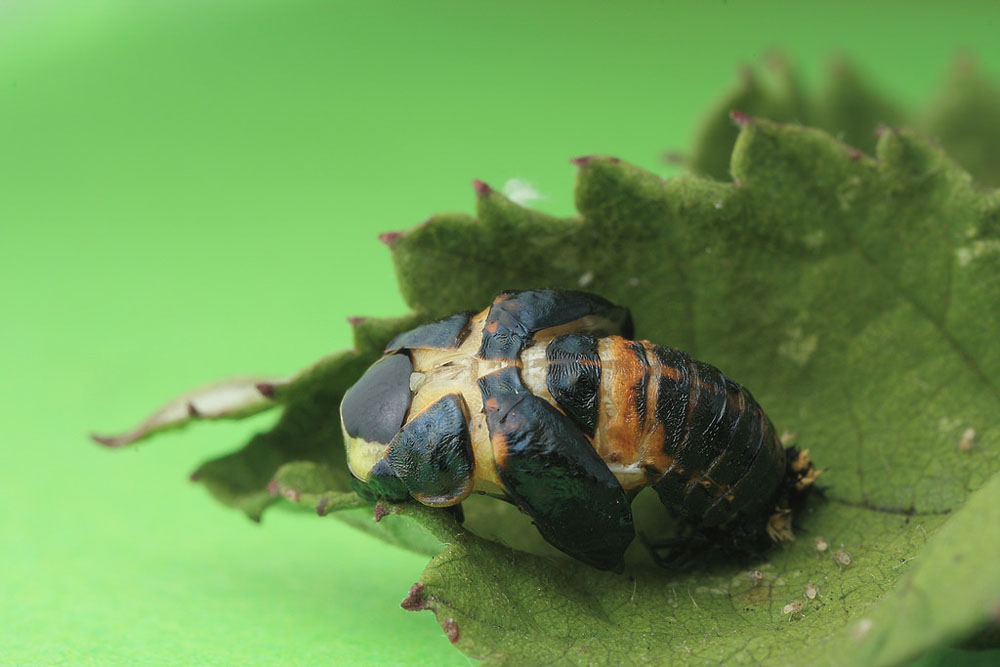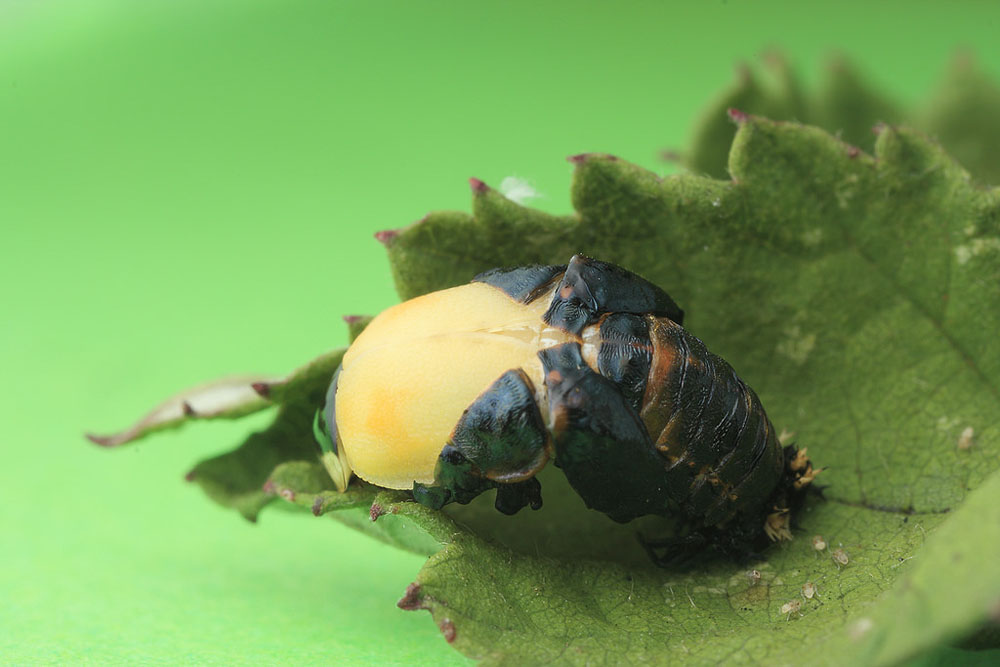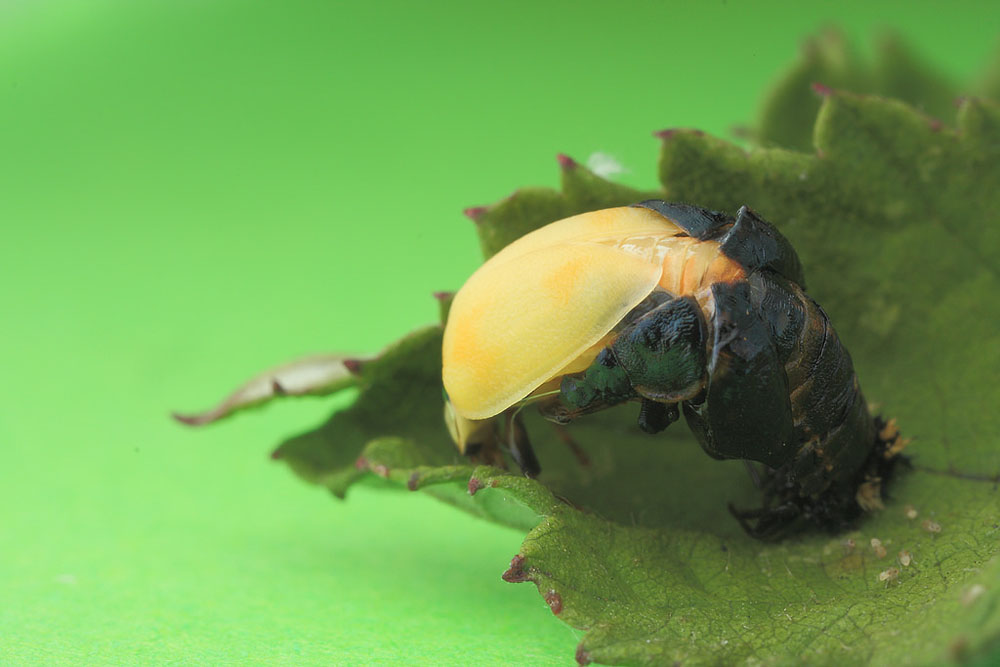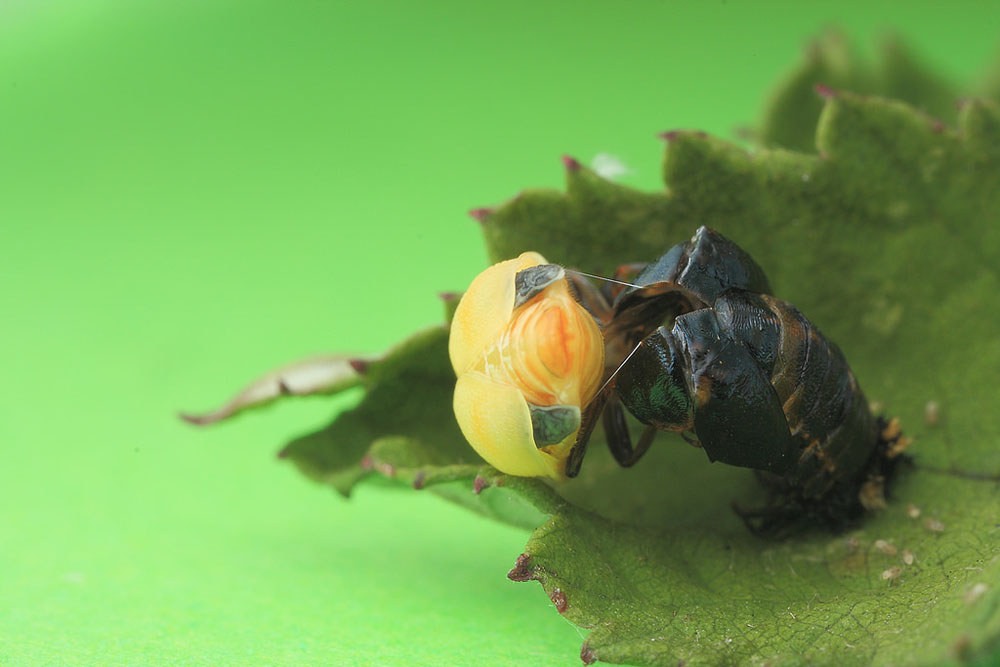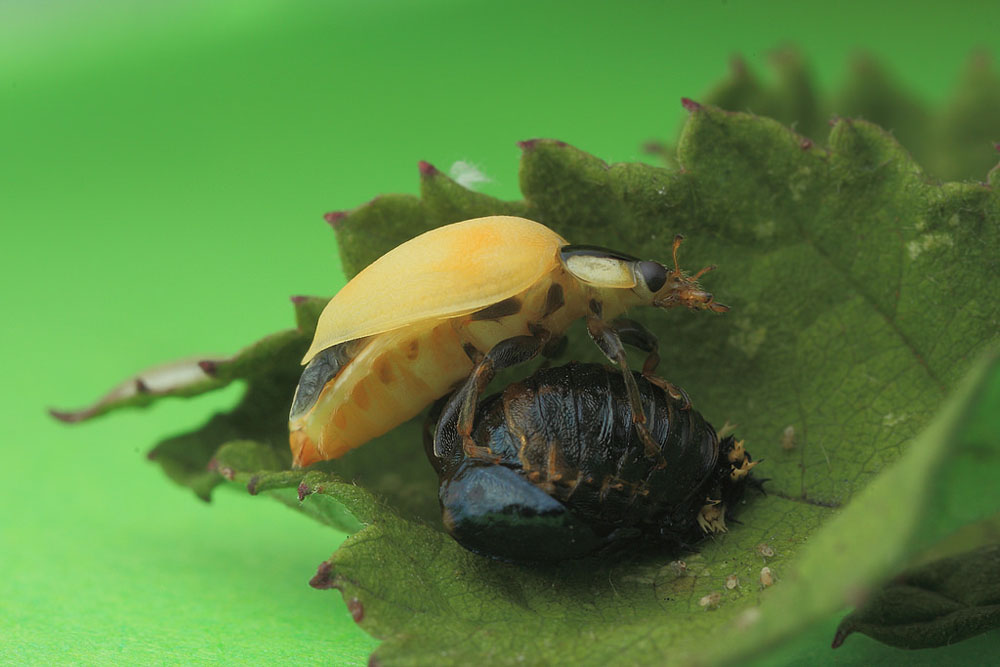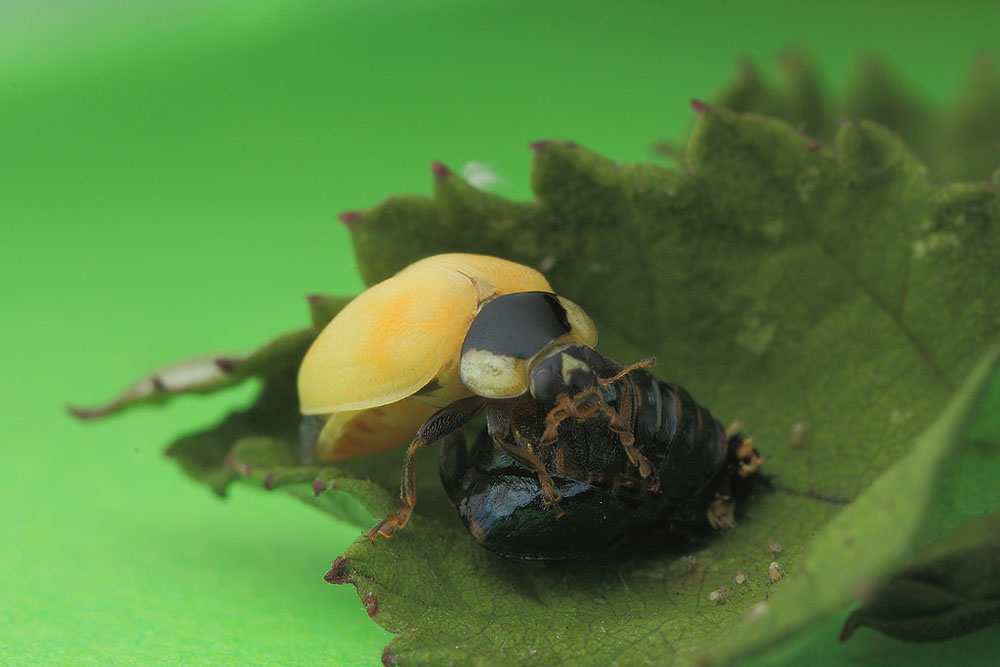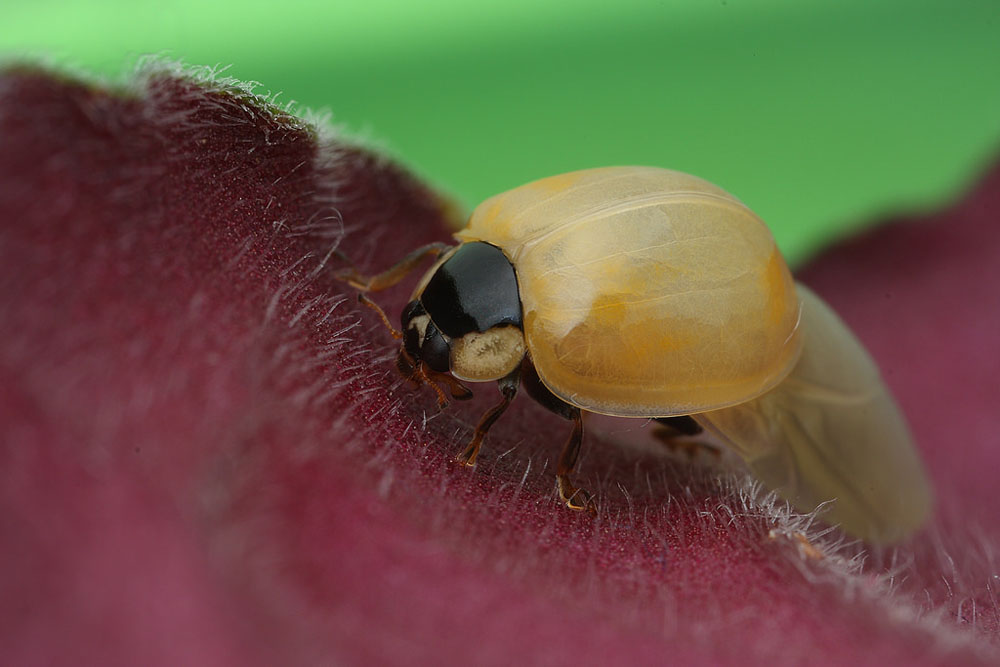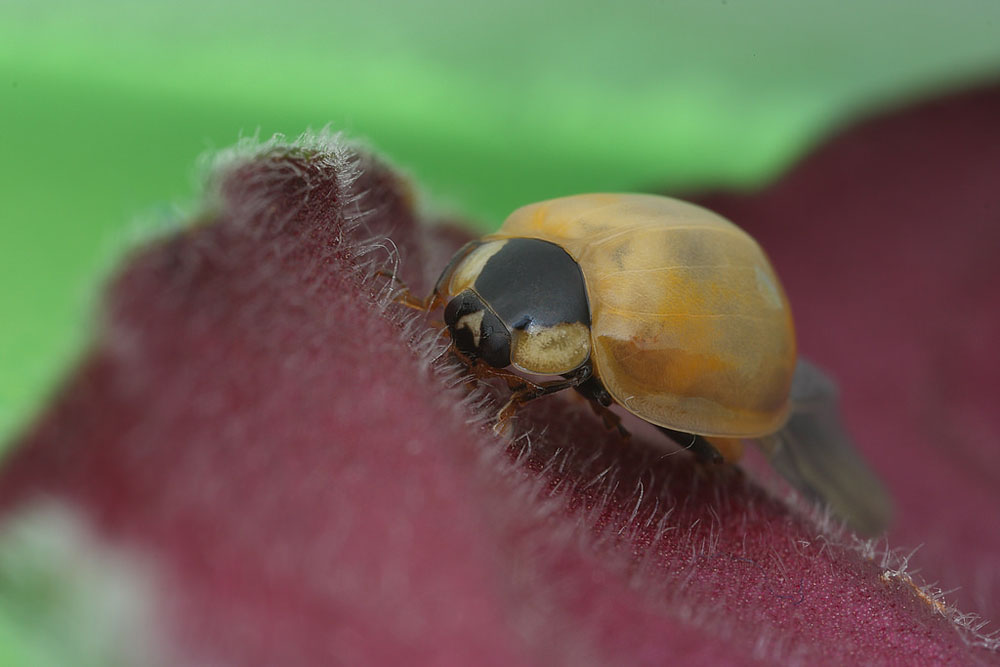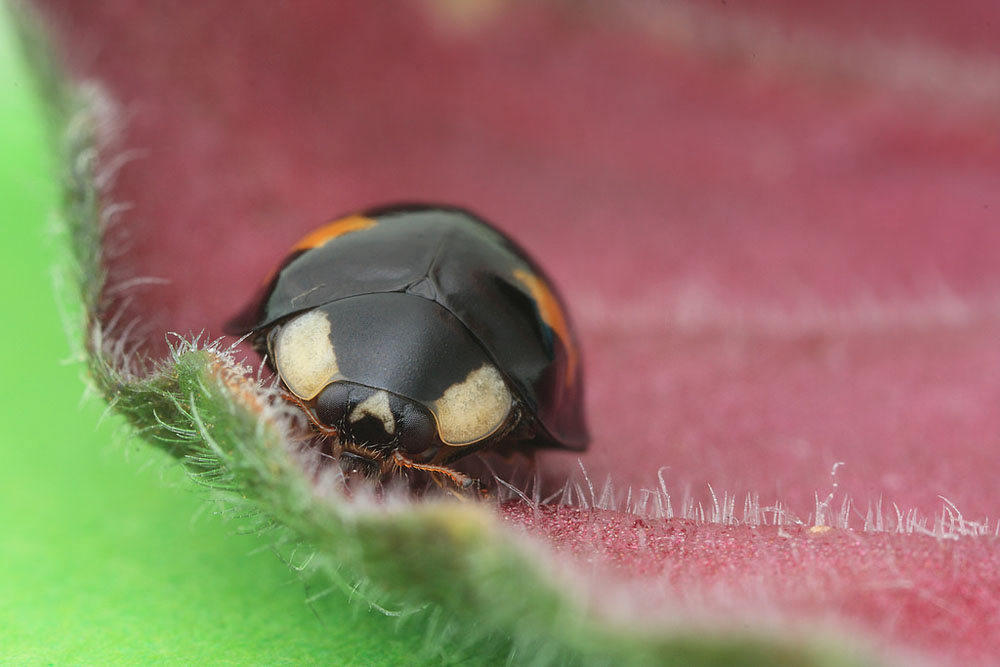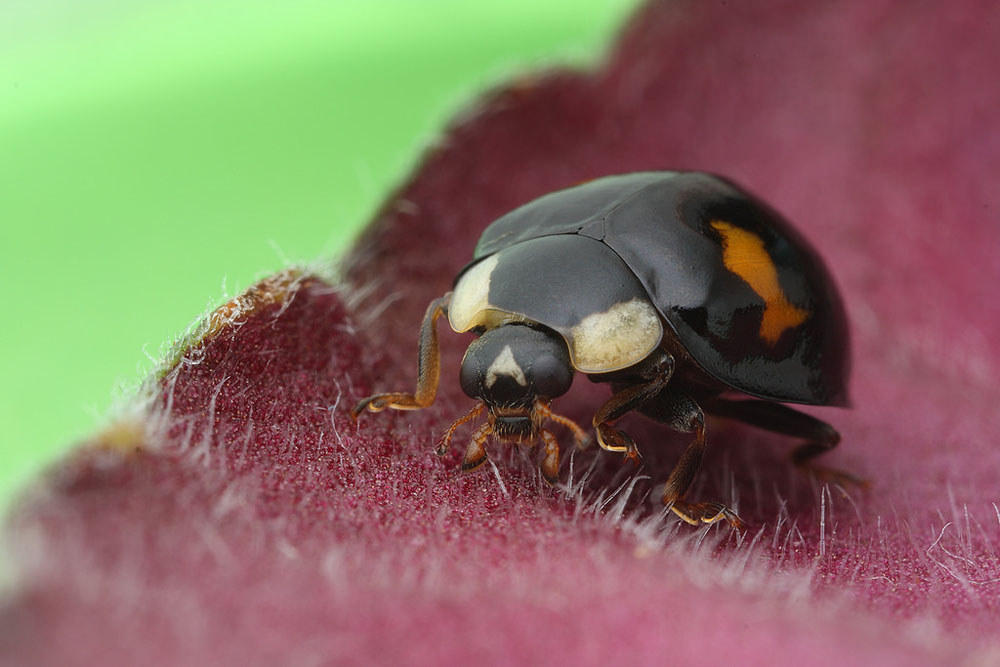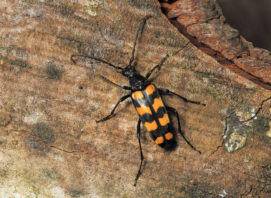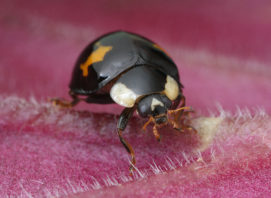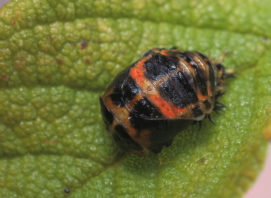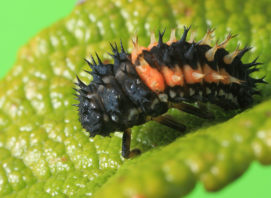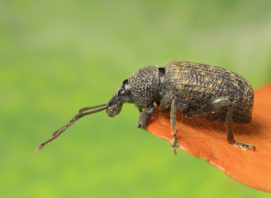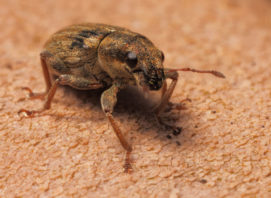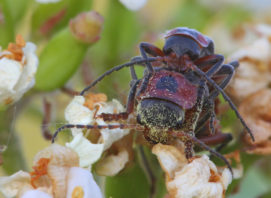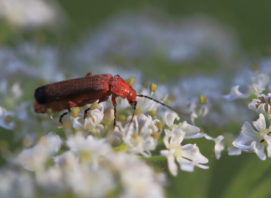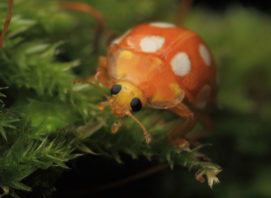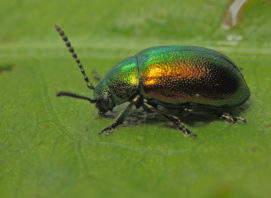Ladybird Metamorphosis Day 14
- The pupa begins to extend and split. Luckily for me I had two pupas developing at the same time which improved the chances of capturing this magical moment! I was lucky with this one. I wasn’t so lucky with the other pupa which emerged when I wasn’t around. Both ladybirds developed into different types of Harlequins so it was interesting seeing how their colouration and spots emerged.
- The split becomes larger as the pale orange shell of the ladybird is seen emerging.
- As the ladybird thrusts itself forward its pronatum also becomes apparent. Due to the angle of the shot its head is hidden from view.
- Most of the ladybird has now emerged, it just needs one last push to free-up its back end!
- At last free! Not the most attractive of positions. Just needs to turn 180 degrees so that we can see his head and not rear end!
- Eureka! The ladybird has turned to reveal his handsome yet pale features. These soft pastel shades are typical of newly emerged ladybirds.
- At last the ladybird turned almost 360 degrees to finally face the camera. It then left behind the exuvia to investigate its new environment. This is a very dangerous time for a young ladybird as its body is soft and particularly appealing to predators.
In the next sequence I will show how the ladybird gradually changes colour and gets its spots. We then should hopefully be able to identify it. - The recently emerged ladybird leaves behind its empty pupal case to explore its new environment. The ladybird is still translucent as its exoskeleton hasn’t hardened up yet. Notice how the wings are left exposed. It may seem strange to leave the wings unprotected by the elytra at this vulnerable stage but the wings are too soft for flight and they need to be exposed to the air in order to harden.
- The elytra (shell) also needs to harden, change colour and grow spots, for what good is a ladybird without its characteristic spots!
- As the wings and elytra harden simultaneously, the wings gradually begin to retract into their protective casing.
- The ladybird’s elytra is starting to darken and spots are starting to become visible. Within an hour or two the shell will be transformed.
- The ladybird sat motionless in this position while its pale orange and translucent elytra changed into a hard, glossy and black shell with red spots!
- It’s clear by now that the newly emerged ladybird is of the invasive Black Harlequin variety.
- It is estimated that 25% of the UK harlequin population is made up of black harlequins (BBC News Magazine). I could tell already that this was a considerably larger ladybird than the orange and red variety not to mention the native two and seven spot species. Unfortunately the black harlequin is very invasive and will eat other smaller ladybirds as well as larvae and eggs of other insects.
- This Darth Vader of the ladybird world will become an awesome predator.
- From this angle one can clearly see that it’s a Black Four Spot Harlequin. Notice how the dull and matt-like parts of the shell are now almost completely glossy. At this stage I had to increase the diffusion in order to avoid specular highlights.
Category

